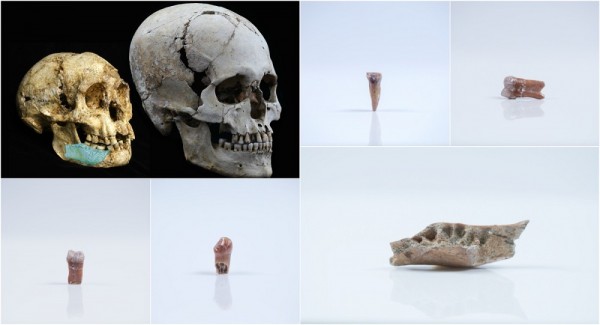Hobbits Existed in Indonesia at Least 700,000 Years Ago
| Ana Verayo | | Jun 09, 2016 02:06 AM EDT |
(Photo : UOW) Hobbits are confirmed to be a subhuman species living in Indonesia for at least 700,000 years ago.
Researchers claim that pre-humans similar to the hobbits of the famous Lord of the Rings high fantasy novel and films, were once living in an island in Indonesia some 700,000 years ago.
In this new study, an international team of researchers reveals how a hominin race of short and slender humans have evolved in Southeast Asia that are probably derived from the Homo erectus. New findings also suggest strong evidence that these tiny, pre-humans that are known as the "Hobbit" that also lived on the exact island 1,000 years later, are derived from a deformed early human.
Like Us on Facebook
This new evidence are obtained from a few teeth, some skull fragments, including a fossilized jawbone that were all uncovered from Flores island by the archaeologists. According to Gert van den Bergh from the University of Wollongong, Australia, these fossils are so remarkable, which also include two milk teeth from children, that they have been dated back to more than 700,000 years ago.
The Homo floresiensis or better known as the "Hobbit" apparently caused widespread intrigue and curiosity not only from the scientific community back in 2004. The remains of this subhuman were identified to be about 50,000 to 100,000 years old, which is the first type of tiny, primitive humans ever to be discovered.
Past studies suggest how these human ancestors, only measuring three feet in height, have evolved separately, isolated from other human species. Some scientists even theorized how this ancient human can be afflicted with Down's syndrome. Other experts in the field also thought how this is a unique case of a sub human species that evolved to fit the conditions and environment of this small, tropical island.
Since that discovery in the island's Liang Bua cave, researchers have been in the quest to uncover more evidence about these tiny humans where they discovered some prehistoric tools, and eventually found these teeth and bones in 2014.
According to Yousuke Kaifu from Tokyo's National Museum of Nature and Science, these fossils have been determined and confirmed as hominin where they appear to be remarkably similar to the Homo floresiensis. Kaifu adds how the fossilized teeth's morphology also suggests that this comes from human lineage that is also representative of a dwarfed descendant of an early Homo erectus, in which was somehow displaced in the island of Flores.
The smaller jawbones and teeth suggest how the pre-humans that are living on the island were already dwarf-sized since they began inhabiting the island.
Van der Bergh adds that this fossilized teeth and bones from 2014 are already indicative of how the Homo floresiensis is already small in size by at least 700,000 years.
Researchers are now figuring out how these tiny pre-humans arrived on the island, what their population numbers are and the cause of their disappearance some 50,000 years ago, which is also the time when modern humans migrated to the region.
This new study is published in the journal Nature.
Tagshobbits, Indonesia, home floresiensis, human ancestors, human species, subhuman, prehistoric humans, flores hobbits, hobbit human
©2015 Chinatopix All rights reserved. Do not reproduce without permission
EDITOR'S PICKS
-

Did the Trump administration just announce plans for a trade war with ‘hostile’ China and Russia?
-

US Senate passes Taiwan travel bill slammed by China
-

As Yan Sihong’s family grieves, here are other Chinese students who went missing abroad. Some have never been found
-

Beijing blasts Western critics who ‘smear China’ with the term sharp power
-

China Envoy Seeks to Defuse Tensions With U.S. as a Trade War Brews
-

Singapore's Deputy PM Provides Bitcoin Vote of Confidence Amid China's Blanket Bans
-

China warns investors over risks in overseas virtual currency trading
-

Chinese government most trustworthy: survey
-

Kashima Antlers On Course For Back-To-Back Titles
MOST POPULAR
LATEST NEWS
Zhou Yongkang: China's Former Security Chief Sentenced to Life in Prison

China's former Chief of the Ministry of Public Security, Zhou Yongkang, has been given a life sentence after he was found guilty of abusing his office, bribery and deliberately ... Full Article
TRENDING STORY

China Pork Prices Expected to Stabilize As The Supplies Recover

Elephone P9000 Smartphone is now on Sale on Amazon India

There's a Big Chance Cliffhangers Won't Still Be Resolved When Grey's Anatomy Season 13 Returns

Supreme Court Ruled on Samsung vs Apple Dispute for Patent Infringement

Microsoft Surface Pro 5 Rumors and Release Date: What is the Latest?










